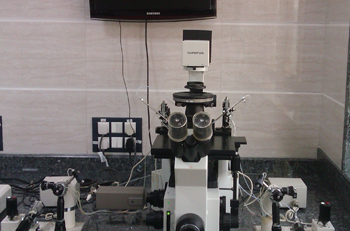ASSISTED REPRODUCTION
- Home
- ICSI
Intracytoplasmic sperm injection (ICSI)
Intracytoplasmic sperm injection (ICSI) is a technique that has dramatically increased pregnancy rates in couples suffering from severe male factor infertility (low sperm counts). ICSI patients undergo the standard in vitro fertilization procedure with the exception that the sperm is injected directly into the egg.
After the eggs are retrieved, intracytoplasmic sperm injection is performed with the insertion of a single sperm directly into a mature egg. This often results in fertilization and development of normal embryos. The babies born after ICSI are just as healthy as babies conceived spontaneously.
With the advent of ICSI, the majority of severe male factor infertility can be successfully treated. New procedures such as MESA and TESA allow men with little or no sperm in their ejaculate to produce a pregnancy. In these procedures, a single sperm is extracted directly from the male reproductive tract, specially prepared, and inserted into the female's egg.
Recent research into intracytoplasmic sperm injection (ICSI) has focused on the impact of ICSI on the meiotic spindle, which is a web like intracellular structure crucial for normal chromosome alignment and separation during fertilization. As part of our ongoing efforts to improve patient care and pregnancy rates we are now using the SpindleViewTM imaging system for our ICSI procedures, which allows us to visualize and avoid the meiotic spindle.
